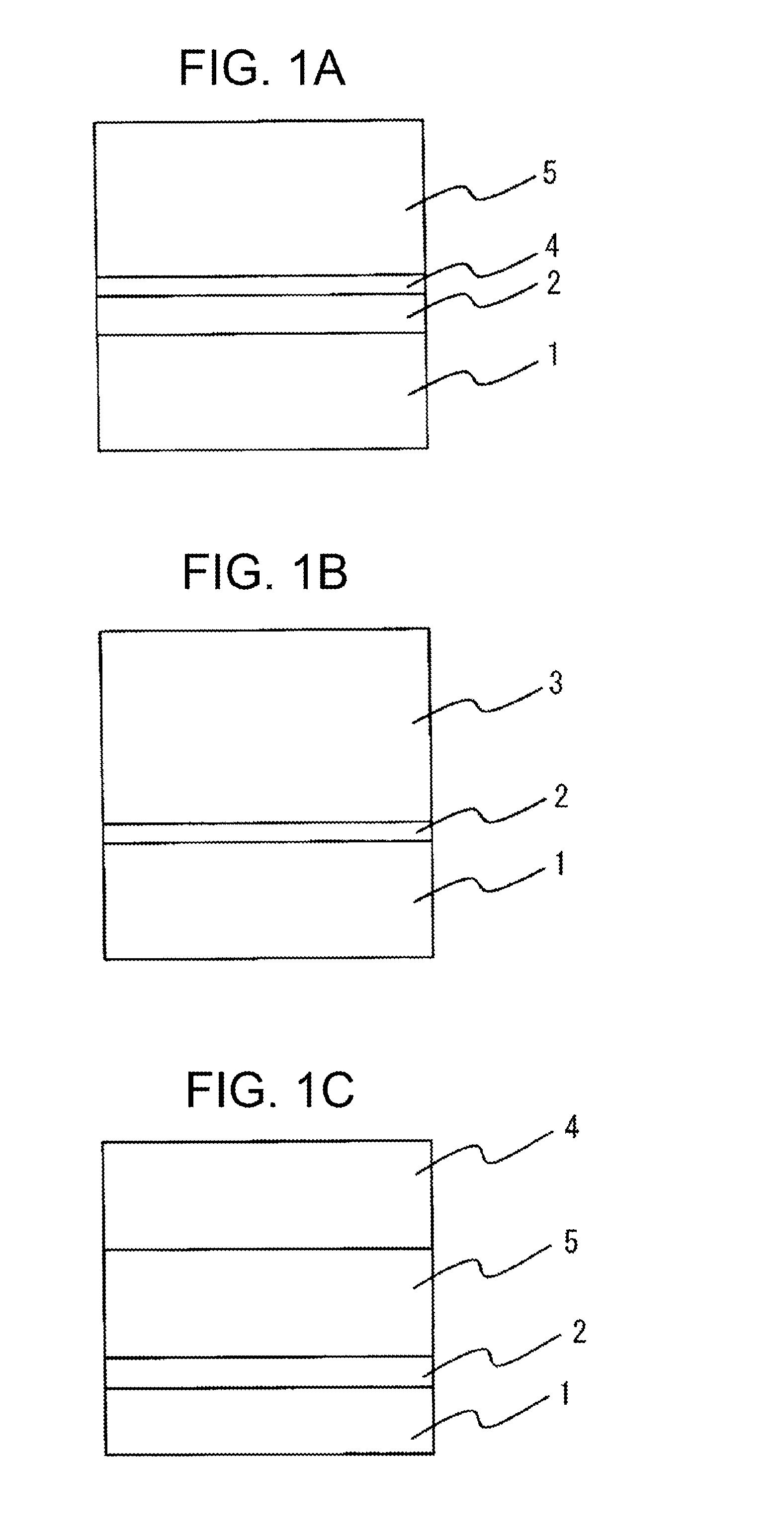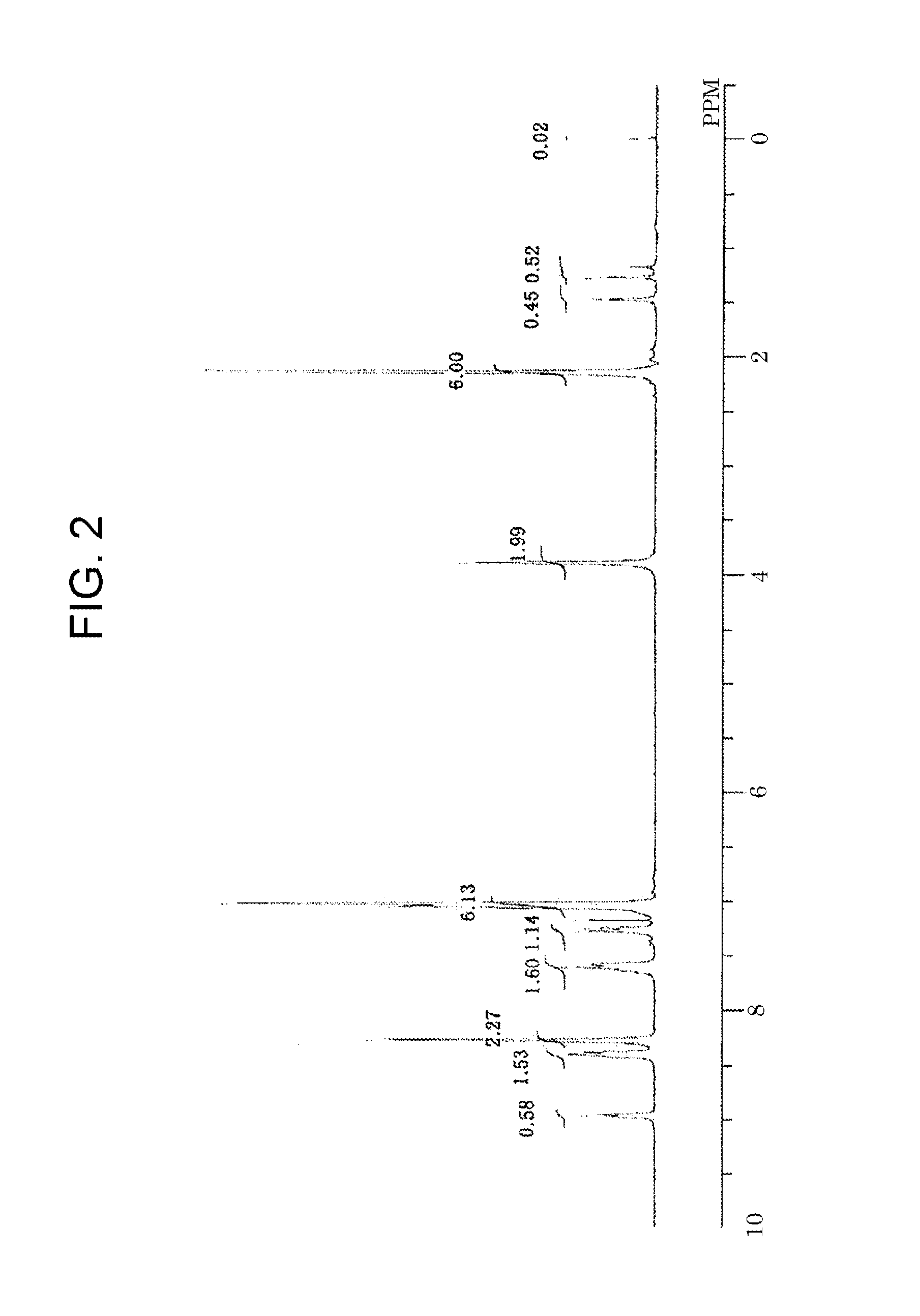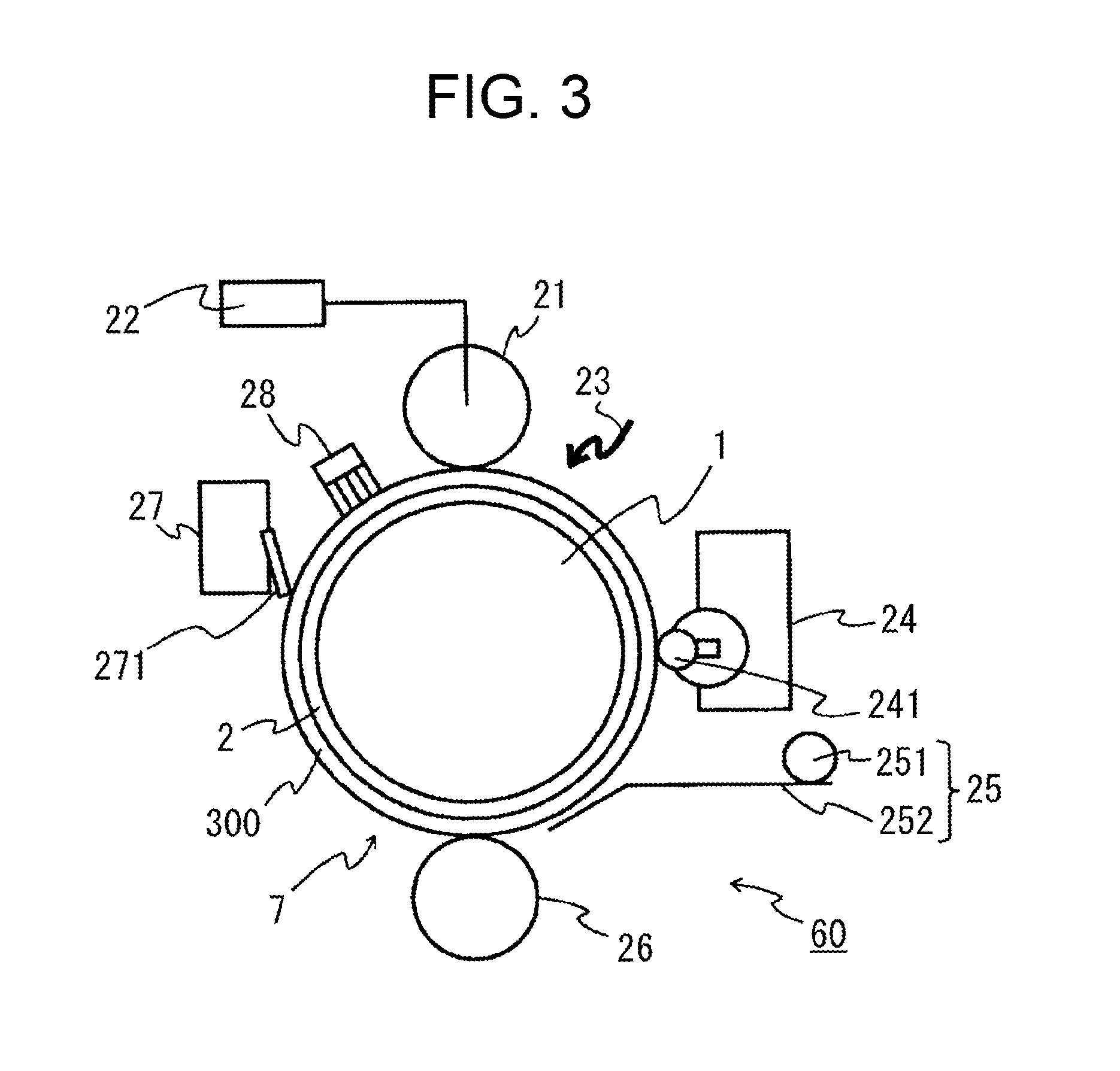Electrophotographic photoreceptor, production method therefor, electrophotographic device, and production method for copolymer polyarylate resin
a production method and photoreceptor technology, applied in the field of electrophotographic devices, can solve the problems of shortening the life of the electrophotographic photoreceptor, image abnormalities, and space required for the collection box and recycling of toner, and achieves sufficient film hardness, increased photoreceptor durability, and sufficient compatibility with solvents.
- Summary
- Abstract
- Description
- Claims
- Application Information
AI Technical Summary
Benefits of technology
Problems solved by technology
Method used
Image
Examples
preparation example 1
Method of Preparing Copolymeric Polyarylate Resin (III-1)
[0095]Solution (i) was prepared by charging a 2-liter, 4-neck, flat-bottomed flask with 540 mL of ion-exchanged water, 12.4 g of NaOH, 0.574 g of p-tert-butylphenol, 24.278 g of bis(4-hydroxy-3-methylphenyl)methane (abbreviated below as “BPCF”), 4.95 g of biphenol (BP) and 0.272 g of tetrabutylammonium bromide. Next, Solution (ii) was prepared by dissolving 0.00133 g of the compound of Molecular Formula (2)-1 (Silaplane FM-4411, from Chisso Corporation) in 20 g of anhydrous methylene chloride, and Solution (iii) was prepared by dissolving 12.240 g of terephthaloyl chloride, 14.960 g of isophthaloyl chloride and 0.75 mL of triethylamine in 120 g of anhydrous methylene chloride. First, Solution (ii) was added dropwise to Solution (iii) over a period of 1 hour so as to prepare Solution (iv), which was then poured into Solution (i) over a period of 2 minutes, following which reaction was carried out under stirring for 1.5 hours. A...
preparation example 2
Method of Preparing Copolymeric Polyarylate Resin (III-2)
[0096]Aside from using 24.278 g of BPCF, 4.95 g of BP, 0.00133 g of the compound of Molecular Formula (2)-1, 8.160 g of terephthaloyl chloride and 19.040 g of isophthaloyl chloride, synthesis was carried out in the same way as in Synthesis Example 1. The starting material charging amounts and copolymerization ratios for the resulting copolymeric polyarylate resin (III-2) are shown in Tables 2 and 3.
preparation example 3
Method of Preparing Copolymeric Polyarylate Resin (III-3)
[0097]Aside from using 24.278 g of BPCF, 4.95 g of BP, 0.00133 g of the compound of Molecular Formula (2)-1, 16.320 g of terephthaloyl chloride and 10.880 g of isophthaloyl chloride, synthesis was carried out in the same way as in Synthesis Example 1. The starting material charging amounts and copolymerization ratios for the resulting copolymeric polyarylate resin (III-3) are shown in Tables 2 and 3.
PUM
| Property | Measurement | Unit |
|---|---|---|
| mol % | aaaaa | aaaaa |
| mol % | aaaaa | aaaaa |
| thickness | aaaaa | aaaaa |
Abstract
Description
Claims
Application Information
 Login to View More
Login to View More - R&D
- Intellectual Property
- Life Sciences
- Materials
- Tech Scout
- Unparalleled Data Quality
- Higher Quality Content
- 60% Fewer Hallucinations
Browse by: Latest US Patents, China's latest patents, Technical Efficacy Thesaurus, Application Domain, Technology Topic, Popular Technical Reports.
© 2025 PatSnap. All rights reserved.Legal|Privacy policy|Modern Slavery Act Transparency Statement|Sitemap|About US| Contact US: help@patsnap.com



